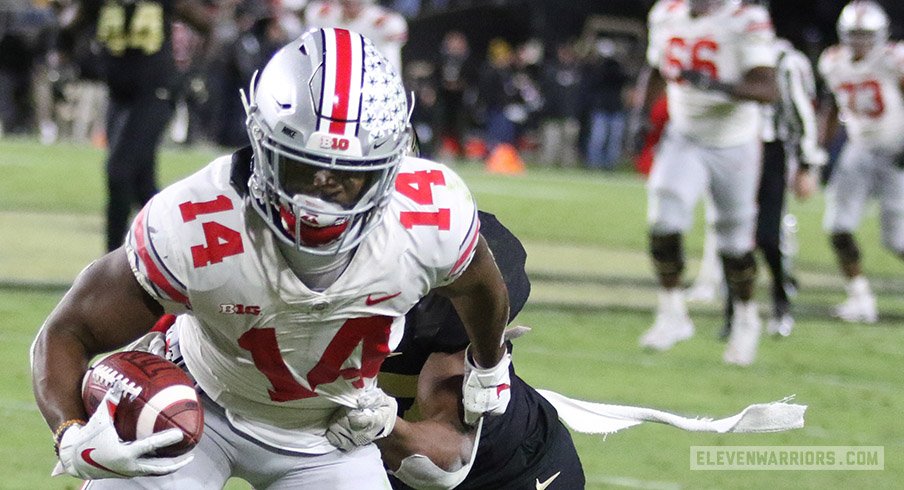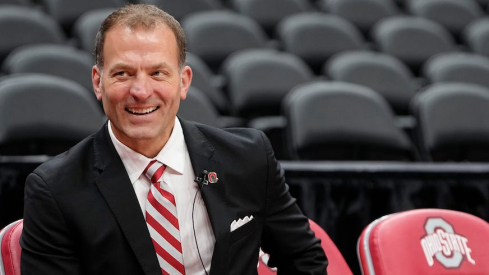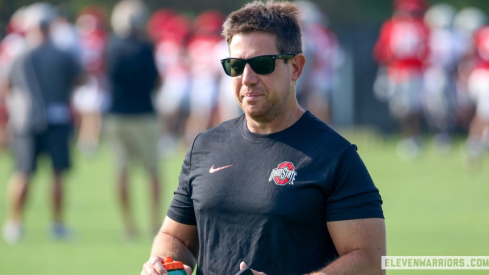Ohio State has a red zone problem.
This problem is just one symptom pointing to a bigger issue – a rushing attack as bad as we've seen out of an Ohio State team in a long time – and those struggles cost the Buckeyes their first loss of the season Saturday night.
Through the first six weeks, the Buckeyes were a middle-of-the-pack team, nationally, in the red zone, scoring 22 touchdowns and kicking three field goals in 29 trips. Perhaps low with Dwayne Haskins zipping the ball all over the field, but coaches everywhere will take touchdowns in 76% of their red zone trips.
In Ohio State's last two games – a home win over Minnesota and Saturday's loss to Purdue – the Buckeyes' red zone offense vanished, scoring a combined 12 points and converting just four times on eight trips inside the 20. To put that into perspective, the .500 conversion rate, which is misleading, even, because we're talking about field goals only here, is well under the .655 conversion rate of the nation's worst performing team, Louisiana-Monroe.
| First 6 Games | Last 2 Games | |
|---|---|---|
| ATTEMPTS | 29 | 8 |
| RUSH TD | 10 | 0 |
| PASS TD | 12 | 0 |
| FIELD GOALS | 3 | 4 |
| PCT | 0.862 | 0.500 |
Under the lights in West Lafayette, the offense was nothing short of horrific in the red zone, getting a meager two field goals on five trips. That was the story of this game, one that will haunt this team for a while to come.
Ohio State saw drives of 83, 69 and 73 yards stall inside Purdue's 20. They would walk away with a combined three points from that trio of drives. None, perhaps, was more deflating to the team than the 16-play, 83-yard drive that started on the Ohio State two and ended with a Blake Haubeil missed field goal. Get the three points there and the Buckeyes cut Purdue's lead to one. Instead, the Boilermakers took over, raced 80 yards in 84 seconds and stormed into halftime on a touchdown to go up 14-3.
The red zone is where Ohio State's problems running the ball are on display for everyone to see. It's where wide receiver routes get shorter and secondaries leverage the back of the end zone as safety help.
If you can't run the ball, you're going to have a bad time in the red zone.
Indeed, Ohio State had a bad time, particularly in goal line situations. The Buckeyes handed the ball off five times inside Purdue's seven and came away with three yards. In all, Ohio State got just nine yards on seven runs inside the Boilermakers' 20.
The bigger picture, of course, is Ohio State's complete inability to run the football. The Buckeyes have two 1,000-yard backs on the roster and yet this rushing attack is as bad as any that I can certainly remember.
OSU has not cracked four yards-per-carry on average in any of their last five games. During that span, Ohio State is putting up just 3.29 per rush and a meager four touchdowns after starting the season with seven rushing touchdowns and 600 rushing yards in the first two games.
A big deal was made last week when an Urban Meyer Ohio State team finished with fewer than 100 yards on the ground for only the third time, topping out at 92 yards on 32 carries against Minnesota. Saturday night, the Buckeyes finished with a paltry 76 rushing yards, the worst running performance of any Meyer Ohio State team ever.
It doesn't matter if your quarterback is throwing for 400 yards every Saturday. If you don't have a running attack, you're just Texas Tech.


